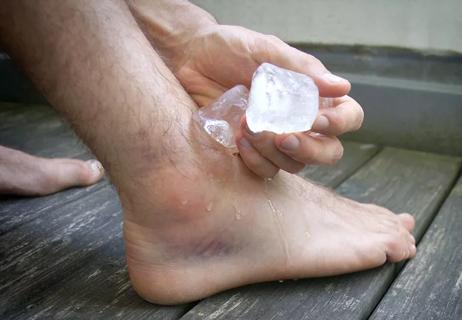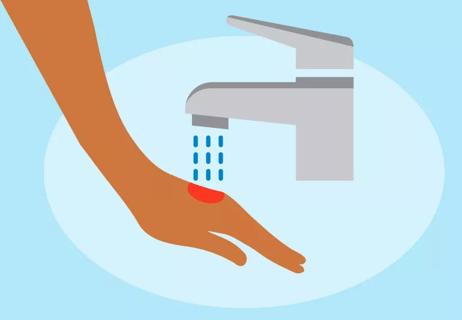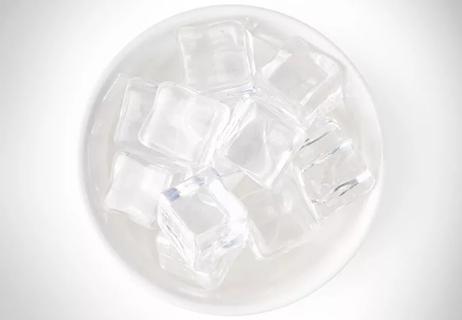What's best for your aches and pains?

It’s hard to get through life without straining a muscle, spraining a ligament, suffering a headache or wrenching your back. And the longer you’re on the planet, the more susceptible you are to arthritis.
Advertisement
Cleveland Clinic is a non-profit academic medical center. Advertising on our site helps support our mission. We do not endorse non-Cleveland Clinic products or services. Policy
But, when something hurts, what will make it feel better: ice or heat? And when does it make sense to use both?
Our experts weighed and broke down the best solutions to many “ice or heat” scenarios and conditions and gave us some added tips for other situations. Check out what they had to say:
Many of these conditions are treatable with medication as prescribed by your health care provider. And, for other situations, over-the-counter (OTC) pain relievers or topical treatments like arnica may be enough to help. But you still may need further relief so here are a few tips to keep in mind when deciding between ice or heat for aching muscles and joints.
Reminder: if any of these conditions are new or don’t resolve quickly, be sure to contact your health care provider for more treatment options.
First of all, do not use heat on acute injuries because that extra heat can increase inflammation and delay proper healing.
When dealing with injuries, it’s best to predominantly choose ice if the injury is acute (less than 6 weeks old). The chill constricts blood vessels which numbs pain, relieves inflammation and limits bruising.
“If you’re sensitive to cold then ice may initially seem uncomfortable or even painful to apply. Heat can feel warm, cozy and be tempting to toss on an injury,” says primary care sports medicine physician Anne Rex, DO. “But don’t be fooled! Ice wins to shut down swelling, inflammation and pain early on where heat may actually make an injury worse.”
Advertisement
If you’re dealing with lingering injuries (older than 6 weeks) then it’s okay to use heat. The increased blood flow relaxes tight muscles and relieves aching joints. This is especially helpful to improve range of motion on a joint that maybe isn’t moving as well.
Use heat before stretching or doing a home exercise program. You can still use ice or cold treatment after exercise or activities to prevent any flare of inflammation. Just remember “Warm up, cool down”.
The inflammation of joints or pain caused by worn-away cartilage in joints can cause pain and stiffness in places like your elbows, knees, shoulders and fingers, just to name a few. For these instances, moist heat, like a soak in a tub or shower of warm-but-not-hot water (92-100°) helps. “Patients with more chronic osteoarthritis usually feel better with heat,” says rheumatologist Linda Mileti, MD.
The one arthritis experience that ice is best for, according to Dr. Mileti, is with a gout flare-up. When the sudden onset of pain and inflammation strikes individual joints, ice can calm the flare-ups while also helping to numb the pain.
Who hasn’t experienced a headache of some degree? Some are lighter, easily treated with OTC pain relievers while others require some extra steps for relief. Ice can help soothe throbbing pain in your head. “Cold masks or wraps over the forehead, eyes and temples help the throbbing pain of a migraine,” says neurologist Jennifer Kriegler, MD.
While ice is usually preferred for headaches, moist heat or a heat wrap can relax neck spasms that contribute to headaches.
Muscle strains and sprains usually benefit from a combo of both ice and heat when they occur. Whether you’ve pulled a muscle in your calf or back doing yardwork or sprained your ankle playing basketball, it’s best to start either off with ice to ease inflammation (including swelling, redness or tenderness of the injury) and numb the pain. Only after the inflammation resolves is it a good idea to switch to heat; this can help relieve any muscle stiffness at the injury site.
Tendinitis is a painful inflammation issue that affects the tendons, the connective tissues between your muscles and bones. A common cause is repetitive activities so tendons in your elbow, knee, shoulder, hip and even your Achilles tendon are common sites. Besides the usual measures to alleviate the pain — rest, pausing of activities that cause pains, OTC pain relievers — ice is the preferred method here as it can ease the inflammation and help numb the pain.
While similar to tendinitis in that there’s tendon pain, tendinosis is distinct because of the cause: a chronic, long-term condition caused by a degenerating tendon. Because this condition involves irritation and stiffness in tendons attached to joints, heat is best for relieving stiffness in the joints, but only after the inflammation resolves.
Advertisement
You can apply ice and heat in lots of ways. Our experts generally recommend up to 20 minutes on and 20 minutes off:
Paraffin wax treatments supply moist heat but overheating can cause burns. (Treatments are labor-intensive and supplies are pricey, too.)
Use caution on areas with decreased sensation if you have neuropathy (from diabetes or another condition) or Raynaud’s syndrome. Extreme temperatures can damage skin.
Advertisement
Wonder if it’s safe to use ice when you’re burning up with fever? “There’s nothing wrong with using cold to bring down a fever,” says Dr. Kriegler.
Advertisement
Learn more about our editorial process.
Advertisement

An ice bath can ease sore muscles and decrease inflammation after a workout

Plus, how long to ice an injury and other icing tips

Ice (and icy water) can actually make a burn worse, not better

This simple trick can seriously reduce puffiness

Most recommended precautions center around minimizing bruising or swelling

Even one drink can have an impact on your cognitive function leading to slurred speech, blurred vision and impaired memory

Type 2 diabetes isn’t inevitable with these dietary changes

Applying a hot or cold compress can help with pain